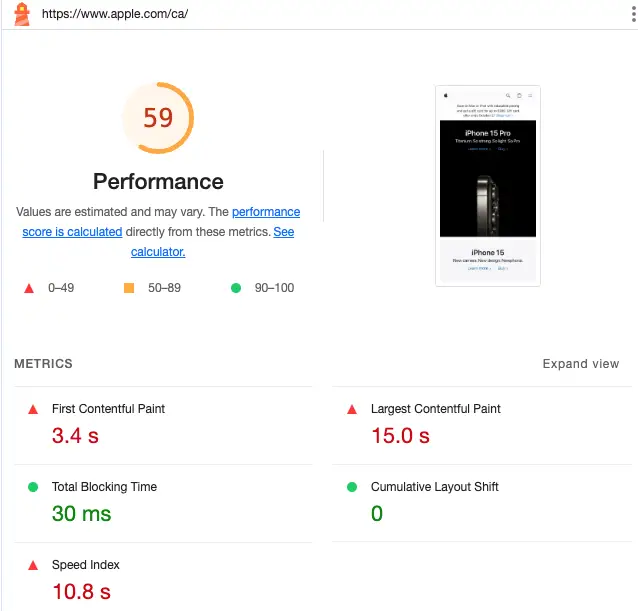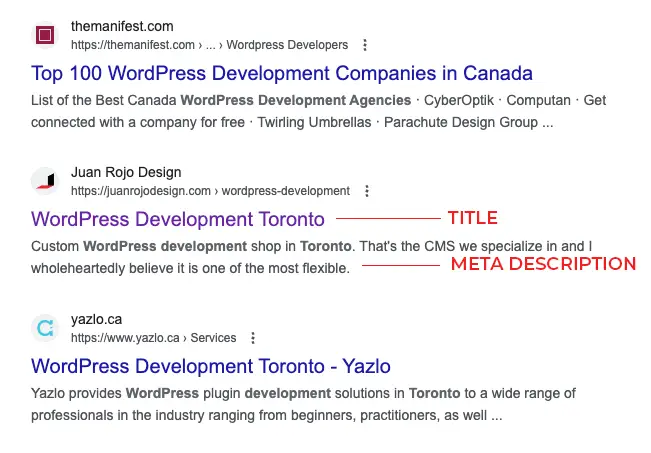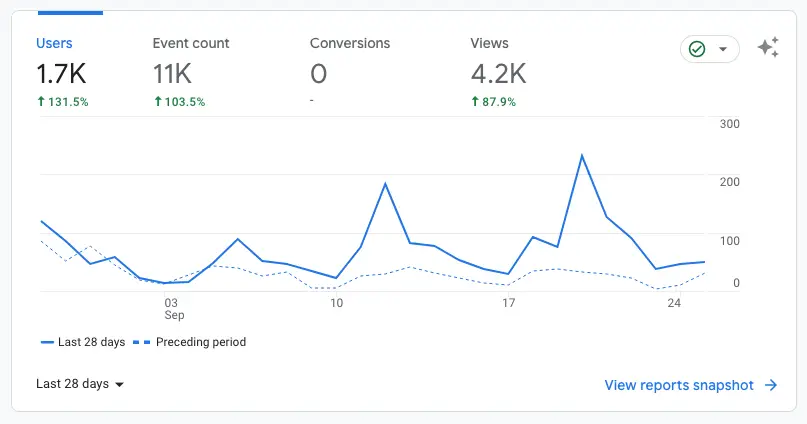Avoid These Top 10 Mistakes in Your SEO Strategy
- Published:
- Updated: January 29, 2024
Share this article:

Every business wants to stand out in the crowded digital landscape. But sometimes, in our zest to climb to the top of search engine results, we stumble over our own SEO strategies. Today, we’re spilling the beans on the top 10 mistakes businesses often make in their SEO game. Stick around, rectify these errors, and watch your online presence flourish.
1. Ignoring the Power of Long-Tail Keywords
Don’t just chase the high-volume keywords! Long-tail keywords, those specific phrases with three or more words, often have lower search volume but can be gold mines of targeted traffic.
Imagine navigating the vast ocean of online content. In this expanse, broad keywords like “shoes” or “books” are massive islands attracting vast numbers of visitors. But therein lies the challenge: the competition is fierce and standing out becomes a herculean task. This is where long-tail keywords, the secluded coves of this vast ocean, come into play.
Long-tail keywords cater to a more targeted audience, often one that’s further along in the buying journey. Someone searching for “red kitten heels size 7” is likely closer to making a purchase than someone just browsing “shoes.” By targeting these specific terms, you position your content right in front of an audience that’s ready to engage or convert.
Long-tail keywords, with their specificity, often have less competition. This means a well-optimized piece of content can find its way to the top of search results more easily.
Moreover, the rise of voice search has made long-tail keywords even more crucial. With people asking their devices full-fledged questions, optimizing for natural, conversational phrases is no longer optional; it’s essential.
2. Overlooking Quality Content
Content is king, and there’s no two ways about it. Some businesses stuff keywords without offering value. Remember, it’s about serving your audience first. Craft meaningful, relevant content they’ll love to consume. Therefore, make sure the information provided on your website is useful or at the very least, it clearly states what you do or what you sell.
Firstly, quality content addresses real issues and provides actionable solutions. When readers land on your website, they’re seeking answers. By providing thorough, well-researched content, you’re not only answering their immediate questions but also establishing yourself as an authoritative figure in your niche.
Now, think about this. Ever found yourself engrossed in an article, hanging onto every word? That’s the magic of engaging content. When your content captivates, visitors stick around longer, reducing your site’s bounce rate. Search engines take note of this behavior, recognizing your site as valuable and relevant.
Moreover, exceptional content encourages sharing. Whether it’s through social media channels, emails, or even word of mouth, the ripple effect of stellar content can significantly amplify your reach. In other words, with greater visibility comes the potential for more backlinks, bolstering your site’s SEO even further.
But, it’s crucial to strike a balance. While it’s tempting to sprinkle your content with a generous dose of keywords, always prioritize genuine value over SEO tactics. Remember, you’re writing for humans first, search engines second. By centering your content strategy around your audience’s needs and interests, you naturally weave in keywords without making it feel forced or artificial.
3. Missing Out on Mobile Optimization
With the world going mobile, if your site isn’t optimized for smartphones, you’re missing out big time. Ensure a seamless mobile experience to capture that on-the-go audience.
First and foremost, if your website isn’t optimized for mobile, you’re essentially keeping your digital doors half shut. In today’s fast-paced world, users expect sites to load swiftly and function flawlessly on their smartphones and tablets. And if they’re met with tiny, unreadable text, or buttons too small to tap, frustration ensues, and they’re likely to move on.
Here’s a staggering thought. Do you know who else values mobile optimization? Search engines. Google, for instance, shifted to mobile-first indexing. This means that the mobile version of your website becomes the starting point for what Google includes in its index, directly influencing rankings.
And let’s not forget the user journey. A mobile-optimized website ensures smooth navigation, user-friendly layouts, and easily accessible content. When users find it simple to locate what they’re seeking, their chances of converting, be it signing up, making a purchase, or any other action, dramatically increase.
Moreover, consider the ripple effects of a poor mobile experience. Beyond just bouncing off your site, users might share their negative experience with others, further dampening potential future interactions.
Lastly, speed shouldn’t be your end goal. Above all, mobile optimization is a combination of user experience and performance. For instance, look at the screen shot below. Apple’s performance is rather sluggish, but their brand recognition and organic traffic affords them the luxury of not having to watch the scores below on a daily basis. In fact, speed is no longer a ranking factor for Google search but if users experience a slow loading page, you might be penalized with high bounce rates which result in lower rankings.

4. Neglecting Meta Descriptions and Titles
Meta descriptions and titles are your first impressions on search engines. Don’t use generic terms. Make them captivating and relevant, urging users to click through.
In the vast world of digital marketing, it’s easy to get lost in the complexities of SEO, backlinks, and content optimization. Yet, sometimes, the most potent tools are the ones that seem deceptively simple. Enter meta descriptions and titles – your digital handshake with potential visitors.
At the very outset, let’s clarify something. Meta titles and descriptions aren’t merely technical elements; they’re your website’s first impression in search engine results. Think of them as the cover of a book in a massive library. With just a quick glance, a reader (or in this case, a potential visitor) decides if your content is worth exploring.
Diving into meta descriptions, these brief snippets provide a window into what your content holds. A well-crafted meta description teases the content, offers value, and ends with a subtle nudge, urging the searcher to click through. Neglecting this snippet, or leaving it to be auto-generated, is a missed opportunity to entice a potential visitor.
But here’s another layer to the importance of meta elements: SEO. While meta descriptions don’t directly influence rankings, click-through rates (CTR) do. A compelling description can lead to higher CTRs, signaling to search engines that your content is relevant and valuable.
Here’s a pro tip: Sprinkle your primary keyword naturally within both the title and description. It not only reinforces the topic to your audience but also helps search engines contextualize your content.

5. Disregarding the Importance of Backlinks
Dive into the SEO universe, and you can’t escape the buzz around backlinks. They’re not just fancy jargon; they anchor your digital presence. Here’s why.
Picture the internet as a vast metropolis. Your website? It’s a buzzing hotspot in this expansive city. Now, roads lace this city, directing traffic and linking destinations. In our digital city, backlinks serve as these vital arteries. They’re direct pathways from one online space to yours.
But, here’s the kicker: search engines play favorites. Imagine valuing a close friend’s recommendation over a distant acquaintance’s suggestion. Similarly, when a trusted, high-ranking site links to you, search engines sit up and take notice. They interpret this as a stamp of approval, a clear indication that your content rocks.
However, don’t fall into the trap of quick fixes. Chasing shortcuts like buying links or dabbling in shady SEO techniques can spell disaster. Remember, search engines are smart. They can spot fishy link-building games, and the consequences? They range from penalties to the dreaded de-listing.
So, how should you actively build your backlink fortress? Let’s break it down:
- Chase Quality, Not Quantity: Aim for links from top-tier sites in your domain. A handful of these can eclipse a sea of average links.
- Pen Your Expertise: Guest post on recognized platforms in your field. This not only bags you links but also carves out your space as an industry influencer.
- Make Headlines with Digital PR: Share compelling tales or updates about your venture. When the media cites you, you earn gold-standard backlinks.
- Craft Link-Worthy Content: Whip up infographics, deep-dive blog pieces, or groundbreaking research. When you offer value, others will naturally want to link to you.
In a nutshell, backlinks are more than digital threads; they’re your endorsements. By harnessing their power, you don’t just increase traffic or gain credibility; you command respect and prime rankings in the digital realm.
6. Not Leveraging Analytics
First off, let’s get real. Launching a website or digital campaign isn’t the end; it’s merely the beginning. How do you know if your strategies hit the mark? If your content resonates? Or if your ads convert? The answer lies in harnessing the power of analytics.
Yet, here’s where many falter. Ignoring analytics isn’t just a minor oversight; it’s like sailing blindfolded. Without real-time insights, you risk veering off course, missing prime opportunities, or worse, crashing into unforeseen challenges.
So, what’s the game plan? Let’s navigate this:
- Dive Deep with Data: Don’t just skim the surface. Delve into the metrics. Understand your audience’s behavior, identify which content ignites interest, and pinpoint where visitors drop off.
- Adjust On-the-Fly: Armed with fresh insights, be ready to pivot. If a campaign doesn’t perform, tweak it. If a webpage has a high bounce rate, refine it. Stay nimble, always.
- Forecast the Future: Analytics doesn’t just provide a rear-view mirror; it projects what lies ahead. Use predictive analytics to anticipate trends and craft forward-focused strategies.
- Celebrate and Calibrate: When numbers soar, take a moment to celebrate. But then, get back to the data. Understand what worked, replicate success, and continuously aim higher.
In wrapping this up, remember: the digital realm is ever-evolving. The beauty of analytics is that it offers a pulse on this change, a constant stream of feedback. By sidestepping its power, you’re not just missing out on data; you’re overlooking a goldmine of actionable insights.

7. Not Updating Old Content
Firstly, let’s clear the air. Old content isn’t ‘dead’ content. Think of it as a classic novel. With a bit of polish, a tweak here and there, it can be just as captivating as any new bestseller. In the constantly evolving digital landscape, however, the stakes are even higher. Google loves freshness. So, not updating old content isn’t just a missed opportunity; it’s handing over potential traffic and ranking prowess to competitors.
So, where should you begin this rejuvenation journey? Here’s a roadmap:
- Audit with Intent: Regularly sift through your content archives. Identify pieces that performed well in the past but have lost their spark over time.
- Update Facts and Figures: Data evolves. Ensure that any statistics, references, or facts remain current. This not only boosts credibility but also positions you as a reliable resource.
- Optimize for Today: Perhaps since your last post, new keywords have trended. Update your content to reflect current SEO practices, ensuring it aligns with today’s search patterns.
- Re-engage and Share: After sprucing up your content, don’t let it sit idle. Promote it again on your social channels, re-engage your audience, and treat it with the same zest as new content.
In summing this up, it’s essential to grasp a simple truth: The internet never stands still. By neglecting to update old content, you’re not just sidelining previous efforts; you’re potentially sidelining growth. Resurrecting old pieces, infusing them with fresh insights, and republishing them can give you an edge in the competitive digital arena.

8. Ignoring Local SEO
First off, let’s cut to the chase. In an age where personalized experiences are the crown jewel, ignoring local SEO isn’t a benign oversight; it’s a missed beat in your digital symphony. Think about it. When people search for “best coffee shop near me” or “emergency plumber in [city name],” they’re not seeking global giants; they want local heroes.
So, how do you tap into this rich vein of local prospects? Here’s your action plan:
- Claim Your Territory: Begin with listing your business on Google My Business. Ensure you provide accurate details, from your address to operating hours. This primes you for local searches.
- Rally Reviews: Encourage your satisfied customers to leave positive reviews. These testimonials act as magnets, drawing in local clientele.
- Localize Content: Infuse your content with local flavor. Mention community events, local landmarks, or even regional news. It builds rapport and boosts local relevance.
- Forge Local Links: Foster partnerships with local businesses or associations. When they link back to you, it strengthens your local SEO standing.
To wrap this up, consider this analogy: In the grand concert of online marketing, global SEO might be the loud, resonant base notes, but local SEO? It’s the intricate melody that captures hearts. By sidelining local SEO, you’re not just missing out on potential customers; you’re silencing the very notes that resonate most deeply with your immediate audience.

9. Over-Optimizing with Keyword Stuffing
Keyword optimization is essential; no debate there. But overloading your content with repetitive keywords? That’s not optimization; it’s overkill. Imagine enjoying a dish. The seasoning enhances the flavor, but dump in too much salt, and you’ve ruined the meal. Similarly, keyword stuffing doesn’t just taste bad to your readers; it also leaves a bitter taste in search engines’ virtual mouths.
Ready to strike the right balance? Here’s your guide:
- Write for Humans, Not Just Bots: Prioritize a smooth reading experience. Weave in keywords naturally, ensuring they enhance, not hinder, comprehension.
- Use Synonyms: Modern search engines are smart. They recognize synonyms. So, diversify your content with varied yet relevant terms.
- Monitor Keyword Density: As a rule of thumb, maintain a keyword density of 1-2%. This ensures you’re not over-spicing your content.
- Seek Feedback: Sometimes, you’re too close to the content. Get a fresh set of eyes. If they feel it’s repetitive or forced, it’s time to re-evaluate.
To sum it up, keyword optimization is an art, a dance of subtlety and strategy. Overstuffing keywords doesn’t just risk search engine penalties; it erodes trust with your readers. They’re seeking valuable insights, not robotic repetition.
10. Forgetting About User Experience (UX)
Venture into the realm of digital platforms, and you’ll quickly realize that beyond the allure of fancy graphics and catchy slogans lies an element that truly makes or breaks the deal: user experience (UX). In this bustling marketplace, it’s easy to get swept up in aesthetics and forget the underlying pulse that drives interactions.
Right from the get-go, let’s clear the mist. A website isn’t just a digital billboard; it’s a dynamic playground. Here, visitors engage, explore, and hopefully, convert. But if this playground feels like navigating a maze—confusing, sluggish, or just plain frustrating—you’re not just missing the mark; you’re likely driving potential clients straight into the arms of competitors.
Keen to keep your users engaged and satisfied? Let’s map out the journey:
- Prioritize Load Times: In the age of instant gratification, patience is scarce. Optimize images, streamline code, and ensure your site loads swiftly. A few seconds can make a world of difference.
- Craft Intuitive Navigation: Steer clear of cryptic menus or clutter. Guide your visitors gracefully from one section to the next, ensuring they find what they seek without a hitch.
- Mobile Matters: In today’s on-the-go world, mobile optimization isn’t optional; it’s a mandate. Ensure your site shines on every screen size.
- Gather Feedback and Iterate: The best insights often come straight from the horse’s mouth. Encourage user feedback and be ready to tweak and refine based on their inputs.
In wrapping this up, here’s a nugget to ponder: At the heart of every successful digital platform lies not just crisp content or captivating visuals, but a UX that resonates. By overlooking its importance, you’re not just sidelining a technical element; you’re neglecting the very essence of what makes users click, engage, and return.

Final Thoughts: Embrace the Learning Curve
The top 10 mistakes in SEO strategy are a rite of passage. But armed with this knowledge, you can sidestep these common pitfalls. Refine your strategy, stay updated with SEO trends, and always prioritize your audience’s needs. With dedication and a dash of savvy, you’ll climb those search engine ladders in no time.
